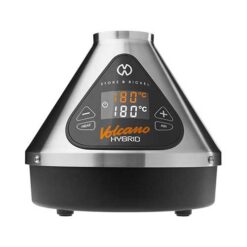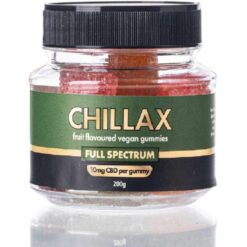Cannabis is a surprisingly resilient plant – but even this hardy species has its limits. One of the most common threats in temperate climates is frost. Whether you are cultivating outdoor or greenhouse cannabis, understanding how frost forms, how it affects plants, and what you can do to prevent damage is critical to protecting your yield and ensuring a healthy harvest.
What Is Frost, And Why Does It Matter For Cannabis Growers?
Frost is formed when water vapour in the air condenses onto surfaces and freezes – usually as temperatures approach or dip below 0°C. This creates a delicate crystalline layer that may appear lovely at dawn but can pose a serious risk for tender plants.
For cannabis, frost is especially dangerous because of:
- Cell damage: Ice crystals inside leaf or stem tissue can puncture cell walls, causing irreversible harm.
- Metabolic disruption: Cold temperatures can slow down or halt enzyme and nutrient processes in the plant.
- Flowering interference: Late-season frost can degrade THC content and ruin bud development in flowering cannabis.
Cannabis And Cold: A Spectrum Of Tolerance
Cannabis generally thrives between 20–30 °C. But several factors influence its ability to withstand cooler conditions:
| Factor | Impact on Frost Resilience |
| Genetics/Strain | Indicas and landrace varieties often fare better in chill weather. |
| Plant stage | Seedlings and clones are vulnerable; mature plants are tougher. |
| Acclimatisation | Plants shifted gradually to adapt better to the cold. |
| Duration & severity | Brief dips above -1 °C are less harmful than prolonged freezing. |
| Moisture & humidity | Dry air and soil buffer against frost; wet conditions heighten risk. |
How Frost Damages Cannabis
Understanding frost’s effects helps you intervene faster:
- Leaves wilt and blacken – Frost-induced cell rupture causes tissue browning and curling.
- Bud rot or fluffiness – Damaged trichomes can turn dense buds airy and fluffy after thawing.
- Slowed or halted growth – Freezing temperatures suppress bud development and resin production.
- Disease susceptibility – Damaged tissues become gateways for fungi and diseases.
Signs Of Frost Damage
Early detection is everything. Watch for these warning signs:
- White or gray dusting on leaves at dawn (your first frost alert).
- Sudden drooping even after morning thawing.
- Leaves that brown, lose structure, or feel mushy within hours.
- Trichome dullness and bud texture changes post-thaw.
Preventive Measures: Frost Protection Strategies
If frost lingers, plants might wilt entirely and fail to recover. But a quick rescue plan can save your crop. Even if your region is prone to early or late cold snaps, there are effective defenses:
Site Selection & Timing
- Plant in areas that warm quickly and avoid frost pockets.
- Time your outdoor grow to end before the expected first fall frost.
Acclimatise Quicker
- Gradually expose cannabis to outside temperatures before transplanting.
- Keep day–night fluctuations moderate to strengthen cold tolerance.
Soil & Mulch Management
- Rich, well-draining soil holds heat better.
- Apply organic mulch around the base to buffer root-zone temperature.
Physical Covering
- Use frost cloths or blankets at night’s first sign of frost.
- Confirm coverage extends to the ground and remove from direct morning sun to prevent heat trapping.
Use Water Wisely
- Mist leaves with lukewarm water before frost to help delay freezing – just do not drench soil!
- Pawpaw-sized water reservoirs can radiate warmth around small plants.
Heat Tools
- Set up heat lamps, strings, or lightbulbs in cramped greenhouse environments to ward off freezing.
- Propane or kerosene heaters are options, but ventilation and CO₂ monitoring are critical.
Wind Protection
- Install windbreaks or position plants near fences or hedges to limit cold air exposure.
Pot Heat Mats
- Especially useful for seedlings and clones – keep root-zone temps above 10 °C.
How To React If Frost Hits
You can still salvage crops if you act quickly.
Immediate Steps
- Apply covers quickly, even if wilted – better to protect than abandon.
- Thaw plants naturally; do not use hot water.
- Inspect after melting; prune limbs and leaves showing permanent damage.
Mid-Term Care
- Keep watering routines steady; avoid stress and dryness.
- Reduce feeding until plants rebuild their strength.
- Introduce heat meters or thermometers to monitor micro-climates.
Long-Term Considerations
- If flowers were just budding, remove frost-damaged buds – they will not recover.
- Adjust next year’s planting zone or time accordingly.
When And How Cannabis Can Survive Freezing
Cannabis is not fully frost-proof, but studies and grower experience show:
- Below -2 °C: Generally fatal, unless very short exposure.
- -1 to 0 °C for less than a few hours: often recoverable with quick action.
- Repeated light frosts can weaken plants cumulatively – and invite mold and nutrient issues.
- Equal-phase frost during night-day transitions is often worse than consistent drops.
Indoor & Greenhouse Cultivation: A Head Start
If frost is a constant threat:
- Move your grow indoors using grow rooms or tents with lights and controlled temps (18–26 °C).
- Greenhouse growers can add heaters or thermal fabrics to retain warmth and cut heat-loss.
- Though costlier, indoor cultivation offers year-round, frost-free success with optimal yields.
Selecting Strains For Cold Tolerance
Some strains are naturally hardier:
- Indica landraces from mountain regions build local adaptation to cold nights.
- Photo-sensitive varieties finish earlier, ahead of frost seasons.
- Fast-growing autoflowers mature quickly – avoiding end-of-season freezes.
What To Do After Frost: Harvest, Quality & Caution
If frost hits close to harvest, here is what to expect:
- Aroma changes: Damp, freeze-damaged buds may have diminished terpene profiles.
- Mold risk: Trichomes can retain moisture – dry in cool, controlled airflow before proceeding.
- Appearance: Expect more amber trichomes and possibly dull hermaphroditism in genetics sensitive to stress.
- Yield: You may need to harvest earlier if further cold is forecasted.
Takeaways
- Frost is avoidable. Awareness and early intervention – using site selection and simple coverings – can often prevent damage.
- Smart planning helps. Choose strain types wisely and stagger planting when possible.
- Resilience builds over time. Each frost cycle you manage helps future grows adapt faster.
Indoor or greenhouse cultivation is a reliable route if your region has long freeze seasons.
Yes, cannabis can survive moderate frost – and with proper techniques, can even thrive in cooler climates. But without awareness and care, frost can take years of labour and nurture with little warning – and leave you with a failed yield.
By combining proactive planting, good strain choice, protective techniques, and responsive measures, you can confidently take on frost and protect your crop. The goal is not simply survival – but thriving right up to harvest time, no matter how chilly the mornings get.
Recommended products
-
Volcano – HYBRID
R9,780.00 – R11,000.00Price range: R9,780.00 through R11,000.00 -
Taste of Cannabis CBD Gummies – 10mg
R150.00 -
BLK Black Mamba Dry Herb Vaporizer
R850.00 -
DAVINCI IQ-C Vaporizer
R3,950.00










